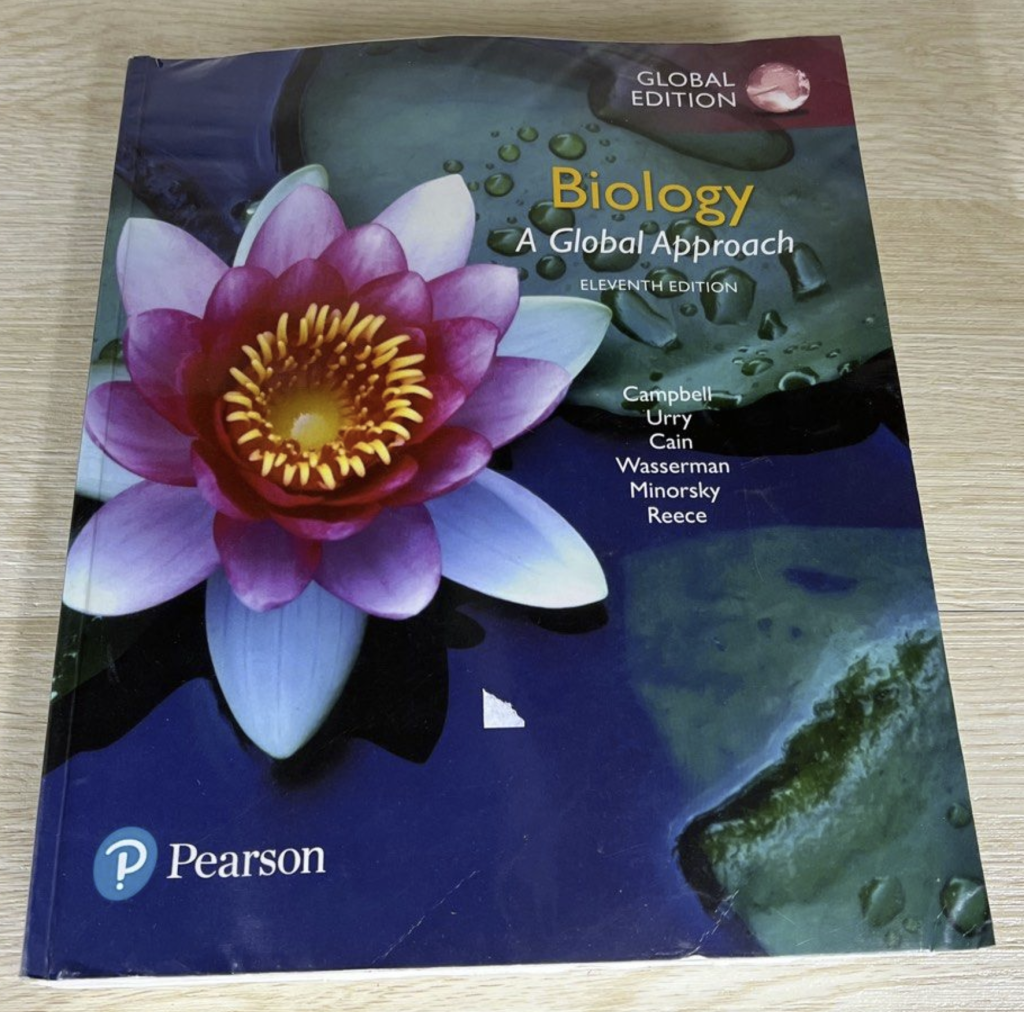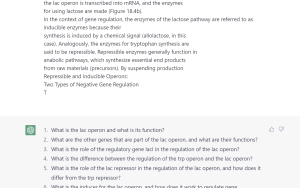

Ari Horesh University of Pavia, Italy
10th of March, 2023If you plan to take the IMAT exam, then you know the importance of the Biology section. However, studying Biology for the IMAT can be a challenging and vast subject to cover. There’s so much information to digest, and remember that it’s easy to feel overwhelmed.
But don’t worry, there’s a solution! One of the most efficient ways to remember and understand information is by using the “Feynman technique.” This technique involves creating a small group of people who can ask each other questions and examine each other, and it’s a method that many successful medical students use.
Not only does the Feynman technique help you remember and understand the material better, but it also saves you time in the long run. By creating practice questions and testing yourself, you can identify your strengths and weaknesses, and focus on improving the areas that need the most attention.
In this article, we’ll show you how to create effective practice questions to help you prepare efficiently for the IMAT Biology section. We’ll discuss the key elements that make a practice question effective, including the level of difficulty, relevance to the exam, and specificity. We’ll also provide you with expert tips and tricks to help you master the Feynman technique, so you can create practice questions that are both challenging and informative.
Whether you’re new to the Feynman technique or looking to improve your practice question creation skills, our article has something for everyone. By the end of this article, you’ll be able to create effective practice questions that will help you prepare for the IMAT Biology section, and ultimately achieve your desired score. So let’s get started and master IMAT Biology together!
Content Quick Navigation
What is the Feynman technique?
The Feynman technique is a popular learning strategy named after Richard Feynman, a Nobel Prize-winning physicist. The idea behind this technique is to reach a level of confidence where you can explain a concept or topic to someone who has no prior knowledge of the subject. The idea is simple but powerful: if you can explain a subject to someone else, you have truly understood it.
To use the Feynman technique effectively, you need to start by choosing a concept or topic to learn. Once you have selected the subject, begin by studying it as thoroughly as possible. Next, take out a piece of paper and write out an explanation of the subject as if you were teaching it to someone who has never heard of it before. Be as clear and concise as possible, using simple language and avoiding technical jargon.
Once you have written out your explanation, review it and identify areas where you are unsure or hesitant. These are the areas where you need to focus your attention and study more. You can use textbooks, online resources, or study groups to help you fill in the gaps in your knowledge.
Finally, revise your explanation and try teaching it to someone else. If you can explain the subject clearly and confidently, then you have truly mastered it. However, if the person you are teaching asks questions that make you hesitate or unsure, then you need to go back and review the material again.
In the context of preparing for the IMAT Biology section, the Feynman technique can be a powerful tool. By creating effective practice questions and testing yourself, you can identify your strengths and weaknesses, and focus on improving the areas that need the most attention. This can help you gain confidence in your knowledge and ensure that you are well-prepared for the exam.
So, in the next section, we’ll explore how you can use the Feynman technique to create effective practice questions for the IMAT Biology section.
Creating Effective IMAT Biology Questions


If you have been following me for a while, you know I have another hobby website called “FutureDoctor.AI” where I discuss using AI during your IMAT preparation and medical school.
Now that we’ve covered the Feynman technique and how it can help you prepare for the IMAT Biology section, let’s take a closer look at how to create effective practice questions. One way to create practice questions is to take parts of your notes and books that we recommend for the IMAT exam on this website, and ask ChatGPT to create questions about that material.
As an AI language model, ChatGPT can generate questions about any topic, including biology. By asking ChatGPT to create questions, you can test your knowledge of the material and identify areas where you may need to focus your studying.


Another effective way to create practice questions is to make a list of questions you can ask your friends later. By studying with friends who are also preparing for the IMAT Biology section, you can take turns creating questions and examining each other. This approach is particularly effective because your friends can ask similar questions but from multiple angles, leading to a better understanding of the material.
When creating practice questions, it’s important to keep in mind the key elements that make a question effective. For example, a good practice question should be relevant to the exam, appropriately challenging, and specific. By creating practice questions that meet these criteria, you can ensure that you are preparing effectively for the IMAT Biology section.
Practice Questions Using ChatGPT
Now that we understand the importance of effective practice questions and how to use the Feynman technique, let’s take a closer look at how to create practice questions for the IMAT Biology section. The first step in creating effective practice questions is to choose an IMAT Biology topic to focus on.
We recommend selecting a few pages of your IMAT Biology textbook or notes at a time and copying it into ChatGPT. You can then ask ChatGPT to generate practice questions based on the information in the text and include the answers from the text as well. This method can help you quickly create a large number of effective practice questions.
Once you have a collection of practice questions, it’s essential to organize them. We recommend dividing the questions into different files and printing them out, so it’s easy to study without distractions. Using paper to study is particularly important for the IMAT exam because it’s a written test. You want to get used to studying with paper and avoid relying solely on your phone or computer.


As you can see, I pasted the text into ChatGPT, of course asking it before to make practice questions out of them, and it spitted out questions I can now ask my friends and practice with.
Where can I find people to practice with?
There are many online resources available for students preparing for the IMAT exam, including forums, Facebook groups, and WhatsApp communities. Check out the menu above and join our forum and WhatsApp communities; our communities are the biggest and most active for these exams.
If you’re looking for people to practice with, you can ask in the community if someone wants to form a small IMAT study group with you. Ideally, you can form a group with people who speak your language, which will make preparation much better and smoother. Having a study group can help you stay motivated and focused, and it can provide you with valuable feedback and support as you prepare for the exam.
When forming a study group, it’s essential to set clear goals and expectations. You should discuss how often you will meet, what topics you will cover, and what materials you will use. It’s also important to establish clear communication channels and to be respectful of each other’s time and schedules.
IMAT Study Group
Once you’ve found people to practice with, the next step is to establish a regular meeting schedule. How often should you meet to prepare effectively for the IMAT Biology section? The answer may depend on your schedule, but ideally, you should meet as often as possible.
If possible, aim to meet every day, even if it’s only for a short amount of time. By agreeing on a schedule and what topics to cover before each session, you can create questions based on the same material and test each other’s knowledge.
During each study session, it’s important to note down which questions were easier and which were harder. This information will be valuable for reviewing the material and improving your knowledge. In the first ten minutes of each session, review the questions that were more difficult during the last session together.
By meeting regularly, you can create a supportive and motivating study environment that will help you stay focused and engaged. You’ll also have the opportunity to identify your strengths and weaknesses and focus your attention on areas that need improvement.
Conclusion
Congratulations, you’ve made it to the end of this article on creating effective IMAT Biology practice questions and preparing for the exam. By following the tips and tricks we’ve provided, you should now have a solid understanding of how to create effective practice questions, use the Feynman technique, and form a study group to prepare for the IMAT Biology section.
But there’s still more you can do to ensure your success on the exam. Here are a few additional tips to help you prepare effectively for the IMAT Biology section:
- Practice, practice, practice: The more practice questions you create and answer, the better prepared you will be for the exam. Make sure to challenge yourself with questions that are appropriately difficult and cover a wide range of topics.
- Stay organized: Keep track of the questions you create and answer, and review your notes regularly. Staying organized will help you identify areas that need improvement and track your progress over time.
- Stay motivated: Studying for the IMAT exam can be a long and challenging process, but staying motivated is essential for success. Set achievable goals, reward yourself for your progress, and don’t be afraid to take breaks when you need them.
By following these tips and incorporating them into your study routine, you can maximize your chances of success on the IMAT Biology section. Remember, the key to success is consistent effort and effective preparation. Good luck, and happy studying!


